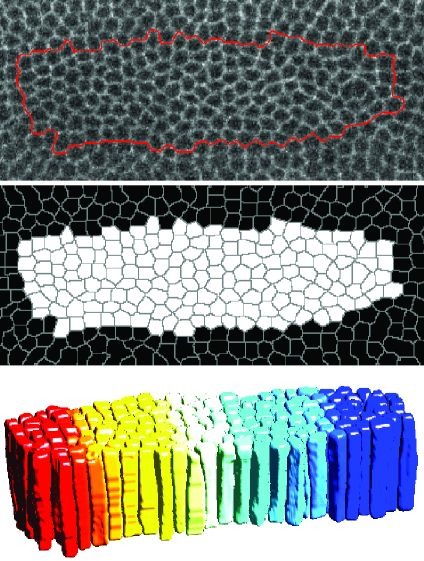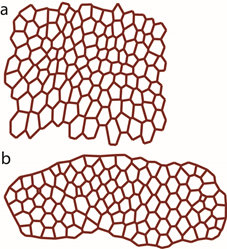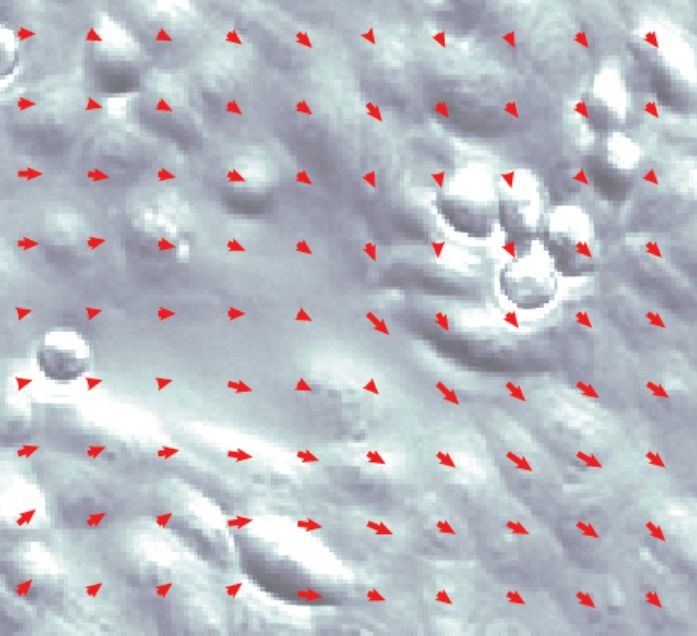Cell intercalation in morphogenesis

Tissue elongation is a fundamental morphogenetic process crucial to embryogenesis and organogenesis in vertebrates and invertebrates. In a collaboration with the Blankenship lab we focus on germ-band extension in Drosophila where elongation is achieved through cell intercalation, i.e., cell neighbor exchange. To study this process we apply automated computational image segmentation to movies of germ-band extension including both single plane and z-stack movies. Segmentation allows us to track and analyze the dynamics of cell areas, cell-cell interfaces, tri-cell vertices, and other cell and tissue properties. Our interest is in gaining insights into the role of molecular mechanisms such as cell-cell adhesion and acto-mysoin mediated tension from studying the dynamics of the geometric properties of cells and the tissue. (students: Tim Vanderleest, Matt Westacott, Julian Hagemeister)

In addition, we attempt to create a computational model of the tissue deformation during intercalation process to determine if contractile forces along with basic cellular assumptions are sufficient to reproduce experimental observations, or if an additional mechanisms are necessary to produce the behaviors seen in experiment. (student: Taylor Firman)
Supported by Research Corporation for Science Advancement (RCSA) Cottrell Scholar Award.
Epithelial cell dynamics in cancer and wound healing
Epithelial cell migration plays a key role in cancer metastasis. We are trying to analyze migratory behavior of mammalian epithelial cells and the factors that contribute to their migration during EMT (collaboration with Dr. Ann Wheeler, University of Edinburgh). We are working towards developing an image analysis suite to quantitatively answer how cells coordinate their motion across different time and length scales, and how cell-cell adhesion, cell-substrate adhesion and migration competence differentially contribute to migration of epithelial sheets. (students: Roopa Madhu, Huxley Hoffman, Jessica McKay)

Regulation of epithelial cell motility and cell-cell adhesion also plays a role in wound healing and the maintenance of epithelial sheet integrity, which is a critical factor in intestinal barrier function. In fruit flies, intestinal barrier dysfunction is a more reliable predictor of age-related mortality than chronological age itself. In humans, an age-related increase in intestinal permeability is associated with a state of increased inflammation, which is also known to increase the risk for colorectal cancer. We seek to address how the normal ‘healing’ behavior of the intestinal epithelial sheet – i.e. the re-sealing of holes, which is critical to maintaining a functional barrier – is modified by aging, and how (if at all) are age-related changes in epithelial dynamics distinct from changes in cellular migration behavior that are associated with gradual increase of cancer transformation potential. (student: Celia Smits, Roopa Madhu)